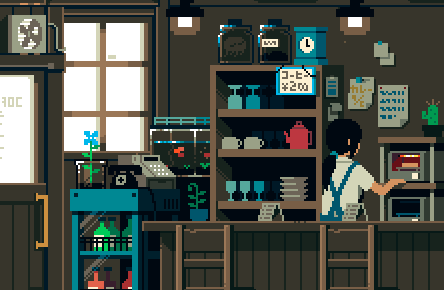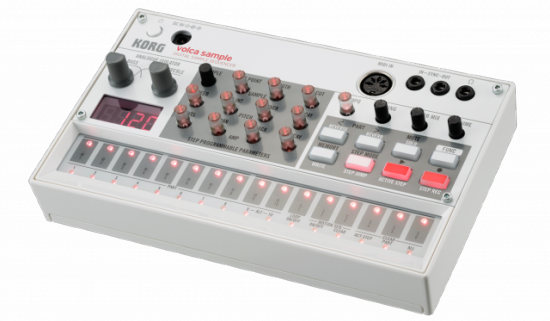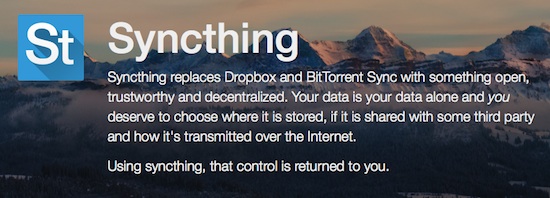
Sometime the simple ideas can do more. This collection of animated gif is such a thing. The works from 1041uuu™ are like impressions from japan, but lovely packed into animated gifs. Hey, Cologne/NRW-people! Anyone want to do something like that?

Sometime the simple ideas can do more. This collection of animated gif is such a thing. The works from 1041uuu™ are like impressions from japan, but lovely packed into animated gifs. Hey, Cologne/NRW-people! Anyone want to do something like that?
Raquel Meyers and Goto80 made interesting products since day one of their appearance. And they still do. This PETSCII video celebrates the 10th anniversary (2004-2014) of this two artists. And in my opinion they reached another new height of creativity.
Here is a microsite celebrating this anniversary . Raquel also released a book about this project.

If you are into pixelart, tilesets or pixel art,then you have to take a deeper look at this pixeleditor, called “Pyxel Edit“. This editor has an optimized workflow with productivity in mind. You can work on tiles, tilemaps, animations or plain pixelart on the same canvas – almost at the same time.
The only drawback at Pyxel Edit seems, that it’s build with Adobe Air – you need to download and install the Air virtual machine from Adobe, before you can get the editor to work.
On the other side, this has the advantage, that this editor works on OS-X, too. As you might know, there are not much pixel-editors for OS-X. Using Pixen and Tiled was the only way to go, until now. Pyxel Edit fills this gap gracefully. So give it a try!
PS:
Yes, we also have our eyes in the development of the Kooltool pixel and tile-editor. The Kooltool is build in Love2d – so platform independent as well.
Tidal is a so called “mini language”, designed to live-code strange musical patterns. At the Tumblr 365 Tidal Patterns one code- and sound-example is posted every day. This is something for code and sound gourmets! Read more about Tidal at the TopLap live-code fortress.
d1 $ iter 8 $ slowspread ($) [chop 4, rev, (|+| speed “0.5”) . slow 2, id, trunc 0.25, jux (|+| speed “1.1”), id] $ stack [ within (0.25, 0.75) (every 3 (rev . slow 2 . stut 8 0.4 0.2)) $ whenmod 5 3 (degradeBy 0.6) $ sound (samples “grunt*16″ (run 11)) |+| end “0.05” |+| speed “2”, sound “~ kv*2 ~ ~ ~ ~ ~ ~”, sound “~ ~ shard:16 ~”, sound “~ ~ ~ sdeep*4″ |+| speed (whenmod 6 5 ((*0.5) <$>) “5”), sound (samples “~ ~ ~ b/2 ~ b/5 ~ b/3″ (run 328)) |+| cut “3”, density 2 $ sound (samples “{hh*2 ~ [~ dup] [~ dup] ~}%4″ “10”) |+| speed “2”, slow 2 $ trunc 0.5 $ (striate 16 $ sound “fxlong:9″) |+| speed “[0.75 0.5 1]/4″ |+| gain “0.85” ]
Code Example 350 from 365 Tidal Patterns.

Korg’s new masterpiece when it comes to putting out the right product in the right look to the right price at the right moment. We just thought, that the Volca-series was more or less “over” – and suddenly this neat looking sampler is coming to us in winter 2014. Ah, one notice. You can’t directly sample with this one. But there is a iOS-app, that lets the transfer sounds to the hardware. So only a 0.75-sampler. The second drawback might be the low sample rate of only 31.25kHZ, 16-bit sampling.
(via)
See it on pouet.net. Please download the demo, the original soundfile is included!

I am currenty evaluating “Syncthing” – the first open source implementation of the a decentralized file-sync system. Imaging it like Dropbox or BitTorrent Sync. This thing is an open source project, so you can peer into the source-code and compile it yourself. Since file-syncing is a part of the internet-infrstructure, I think it is really important to have this one open source!
The first test of Syncthing was successful and I can encourage everyone to try this out and have an eye at this project.